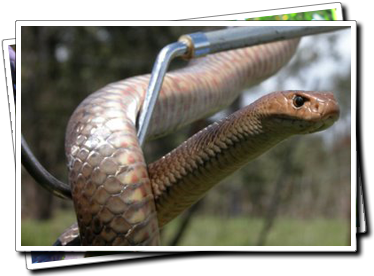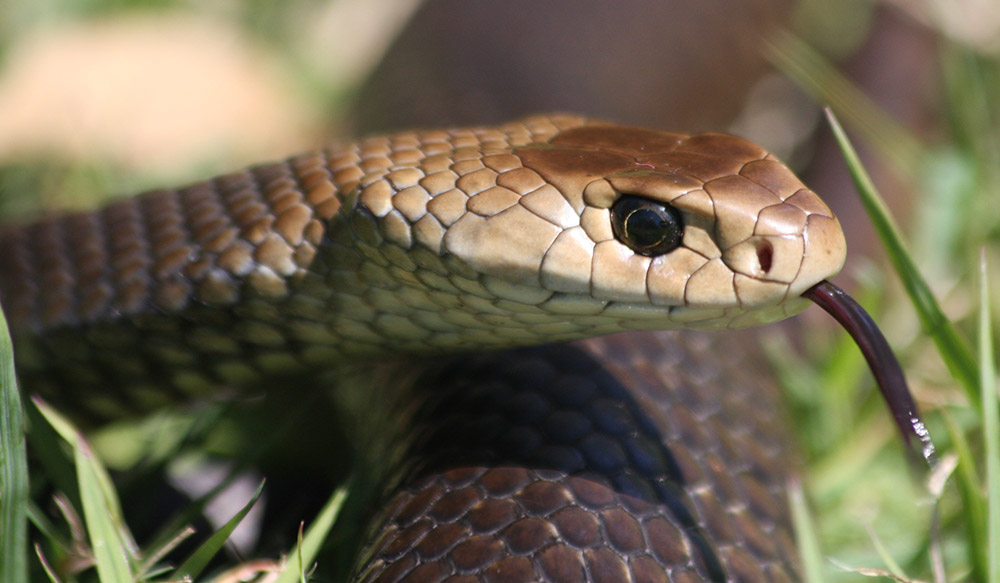Eastern Brown Snake
Species name: (Pseudonaja textilis)
Other Common names:Common Brown Snake, Brown Snake
Highly Venomous
Eastern Brown Snake.
Significance to Humans:
Highly VenomousBites from this species have caused human fatalities. In fact the Eastern Brown Snake accounts for more fatalities than any other Australian Snake. A nervous, ready biter it will defend itself if threatened. Maintains a strong defensive "S" shaped posture. The second most toxic land snake in the world and the most venomous in South East Queensland. Bites from this species should be treated immediately and attended to with correct first aid.
General description:
Highly variable in colouration and pattern. Colour ranges from pale tan through orange, russet, dark brown & almost black, sometimes with cross-body banding. Belly usually cream, yellow or orange with scattered orange or grey blotches. Hatchling and juveniles particularly vary in colour, frequently having dark heads or neck bands, or being completely banded along the body length. Midbody scales at 17 rows.
Average Length:
1.4 metres but a specimen of 2.3 metres was recorded from Karalee in South east Queensland. Snakes in excess of 1.8 metres are very uncommon.
Habitat in SE Qld:
Wide range of habitats but generally prefers drier habitat. Dry open forest, wood and shrub-land, grassland, farmland. Very successful in agricultural regions where tree clearing & introduction of mice and rats has created ideal habitat & abundance of food.
General habits:
Diurnal, active hunter but has been seen active on hot nights. Not regarded as a climbing species but may occasionally climb in search of potential prey. Quick to retreat most specimens are usually seen disappearing into available cover.<
/span>Diet:
Primarily small mammals (rats, mice etc) but also lizards and occasionally frogs.
Local distribution:
Most common large venomous snake. Readily occurs in all but the inner suburbs of Greater Brisbane but especially to the west throughout Ipswich and the Lockyer and Brisbane Valleys. However recent captures by snake catchers have recovered specimens as close to Brisbane CBD as Indooroopilly and Taringa. Common along bayside suburbs to the north and south including the Gold and Sunshine Coasts.
Around the home:
Often encountered in and around localities with a strong rodent presence such as bird aviaries and stock feed sheds. Due to its active foraging nature it often enters homes through gaps afforded to it by open or gaps under doors. Any ground refugia may be utilised such as timber piles, sheet iron, rock walls and heavy vegetation. The maintenance of yards and the control of spilt seed and other food associated with pets may assist in the control of rodents which this species exploits so well.
Copyright © 2015 Brisbane Snake Catchers, All rights reserved.
Web site by Serenity Computer Services


.jpg)
.jpg)
.jpg)
.jpg)
.jpg)